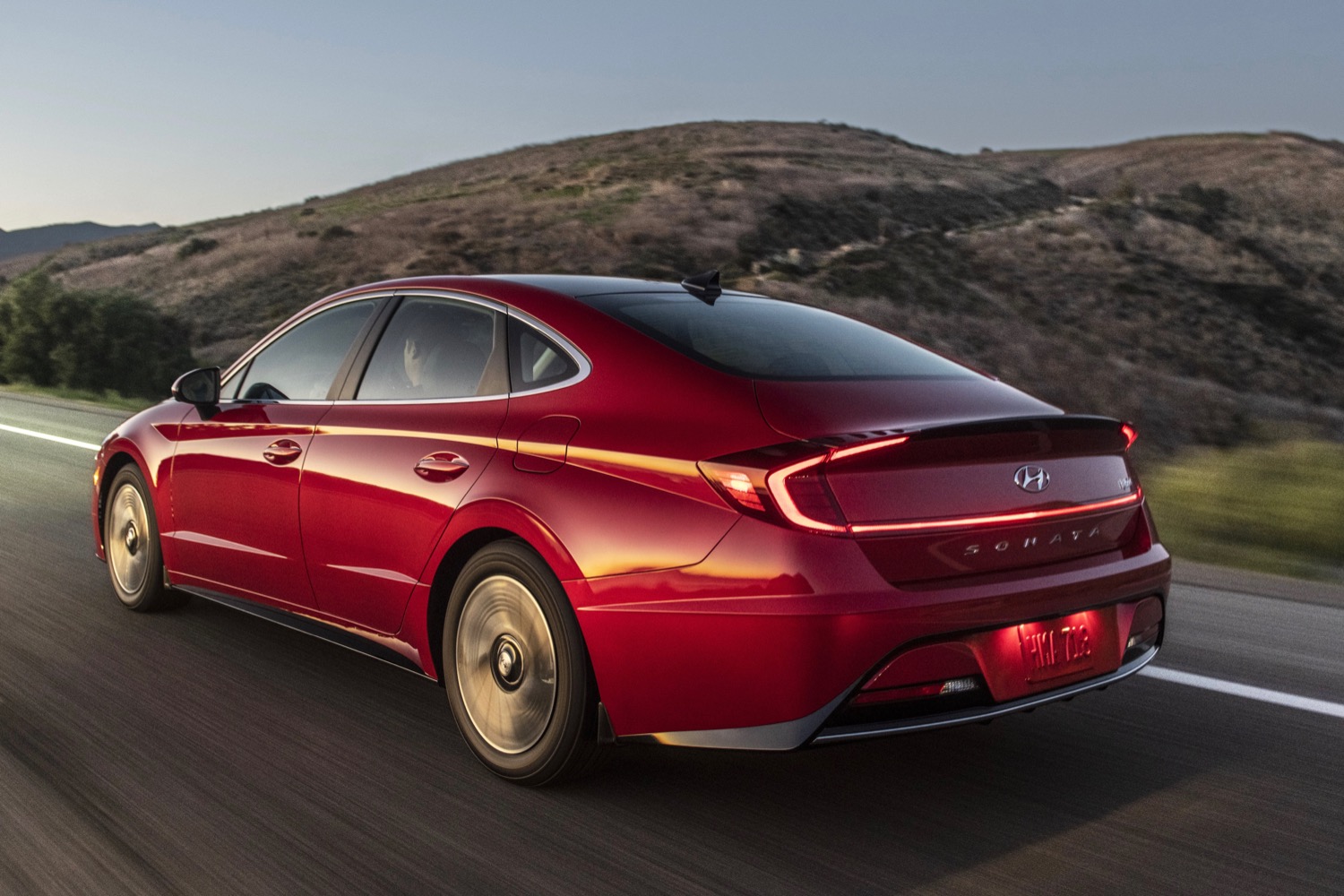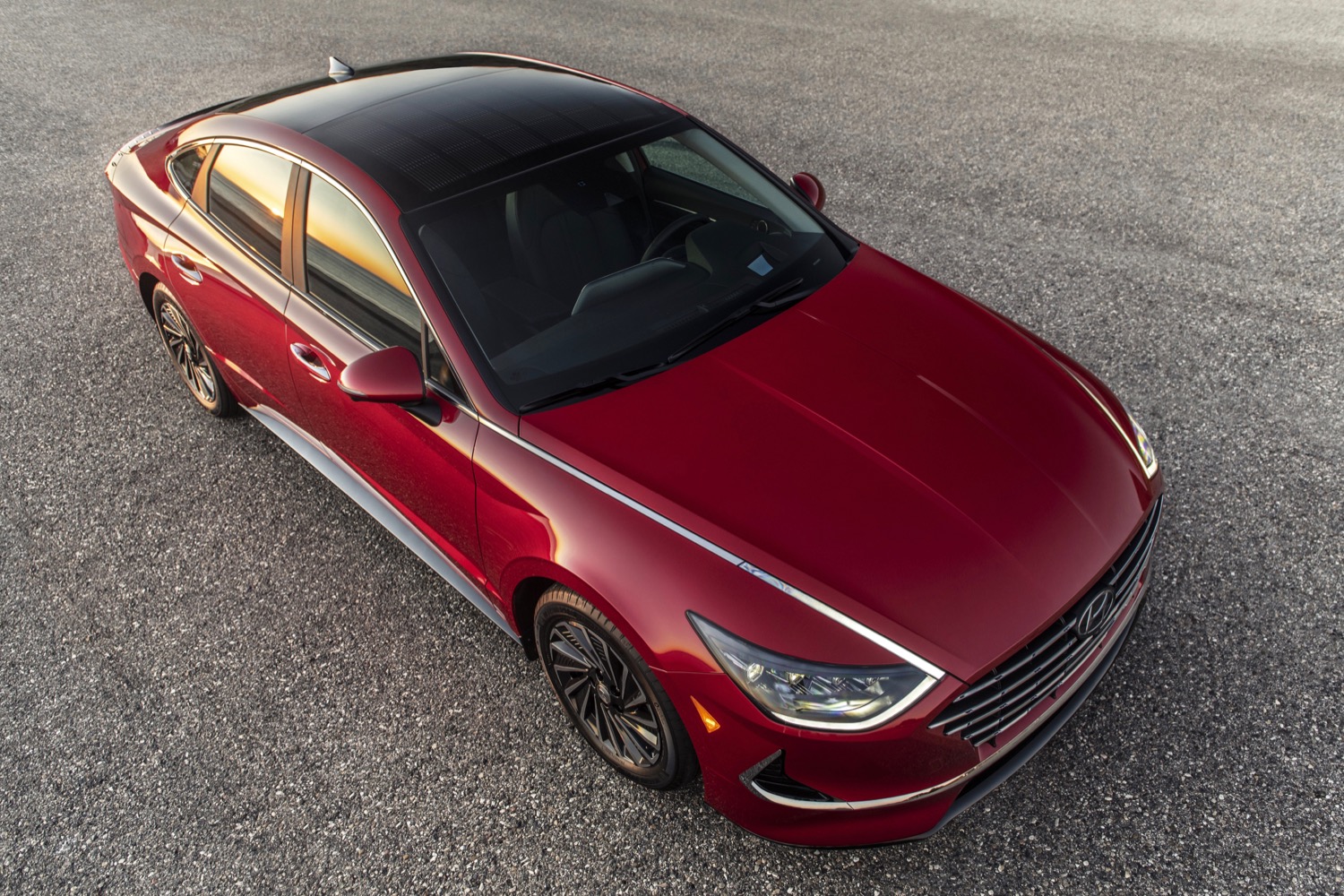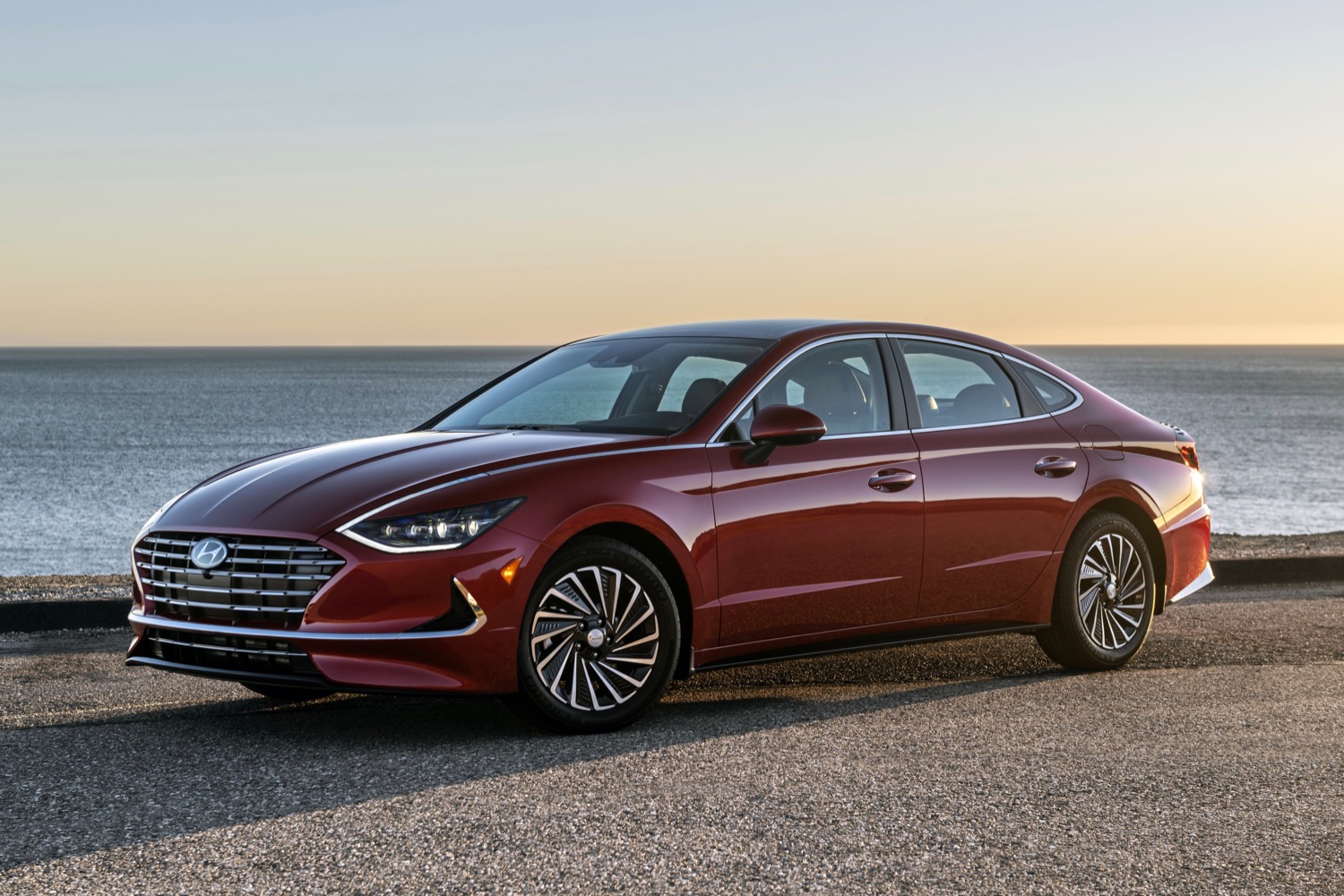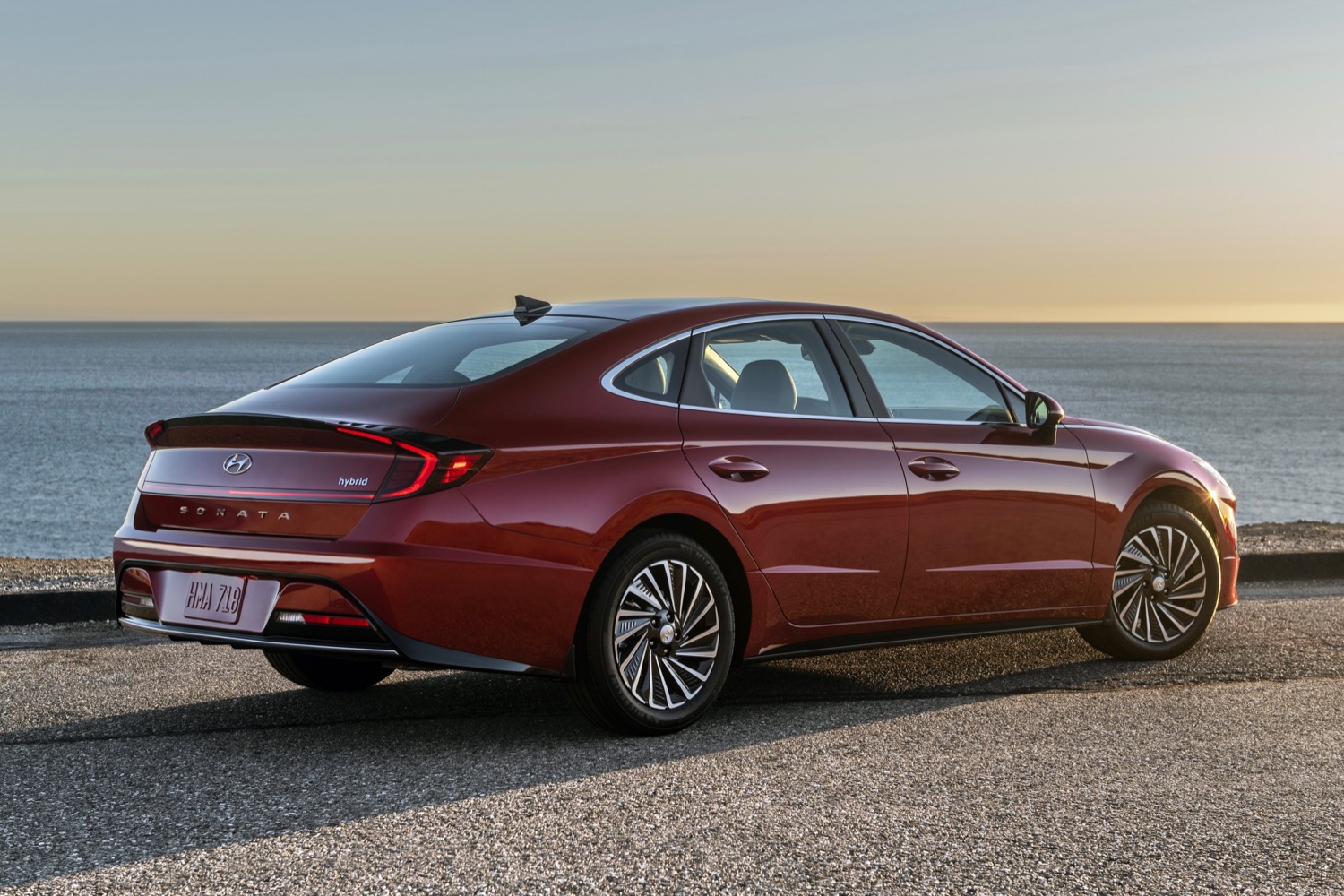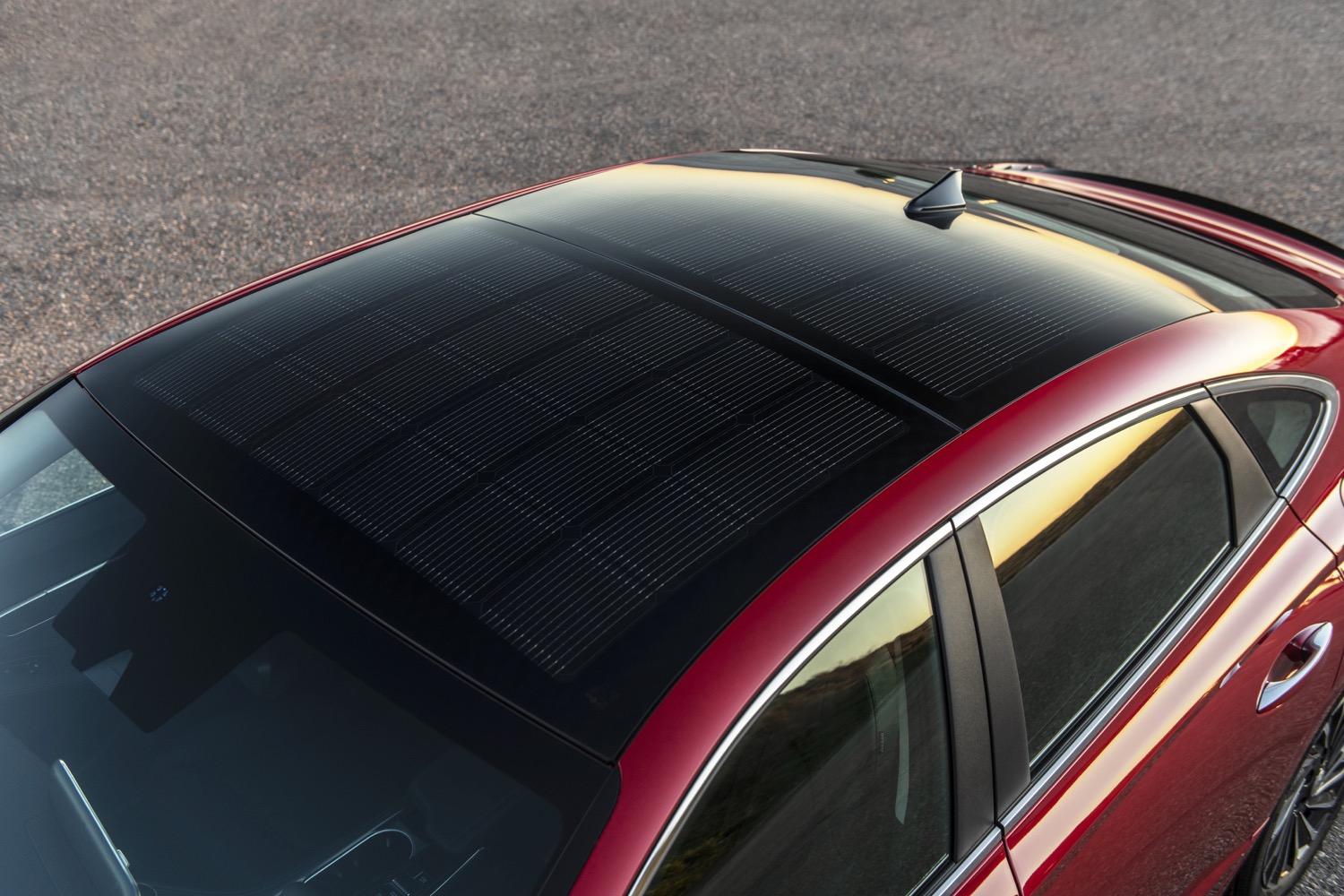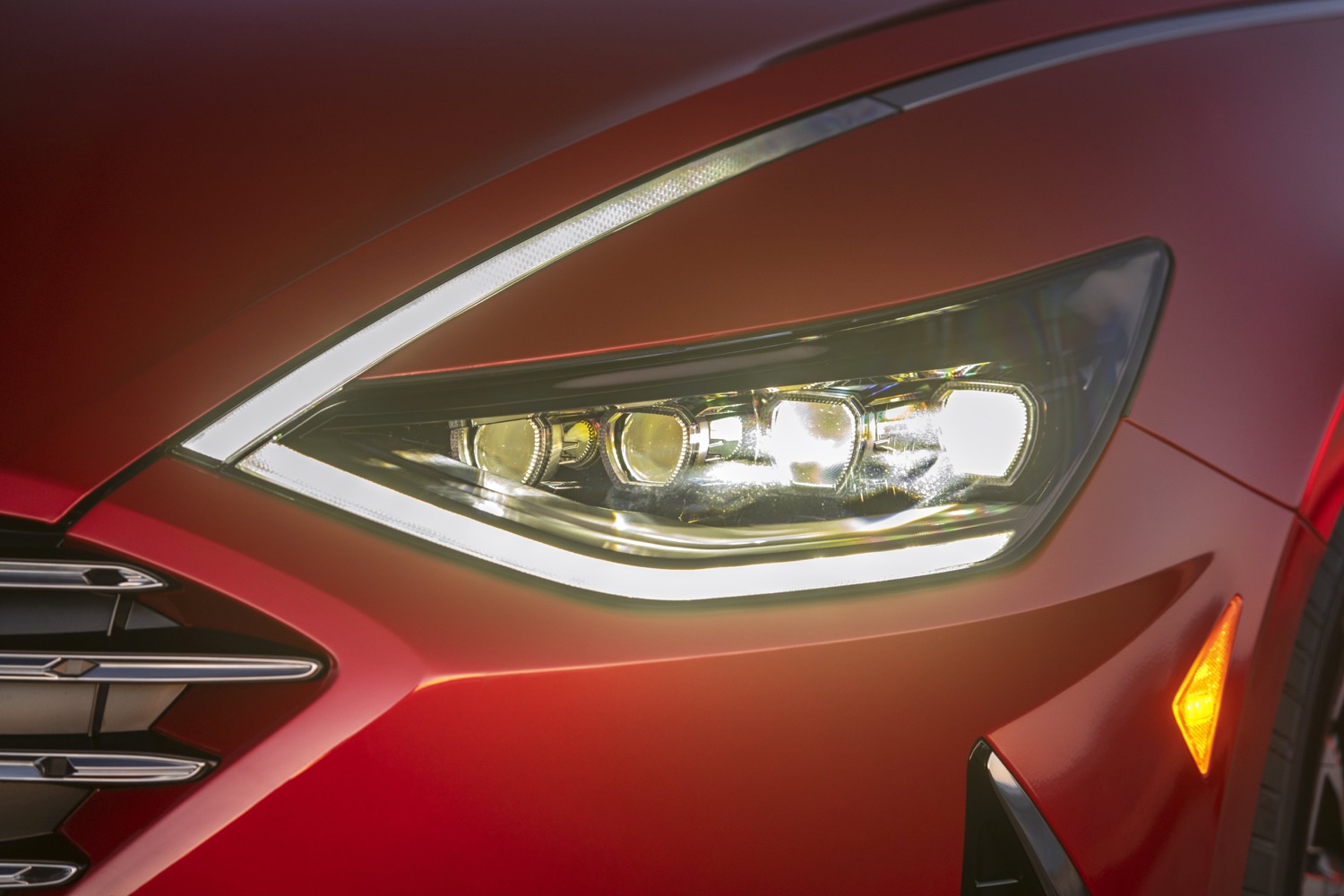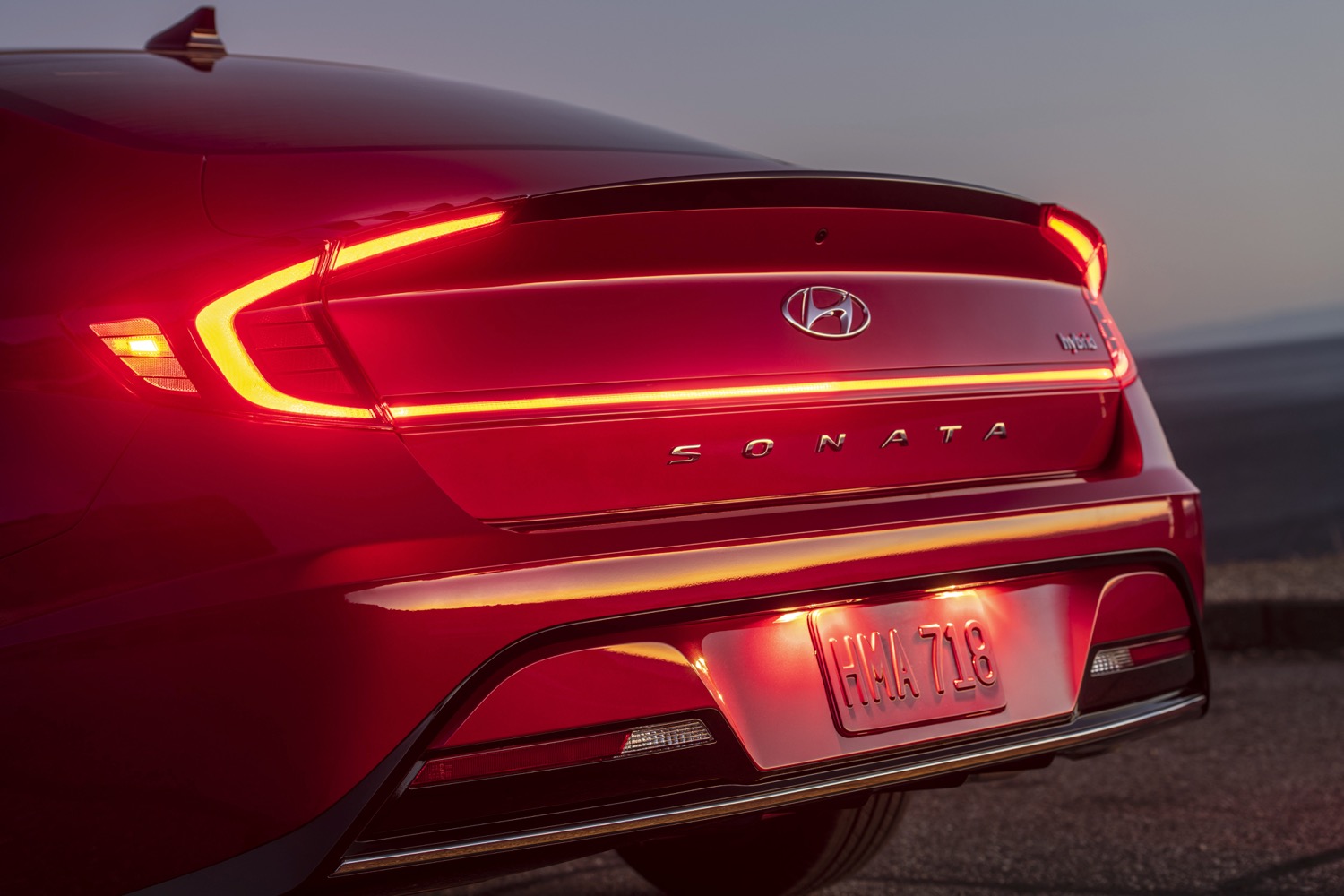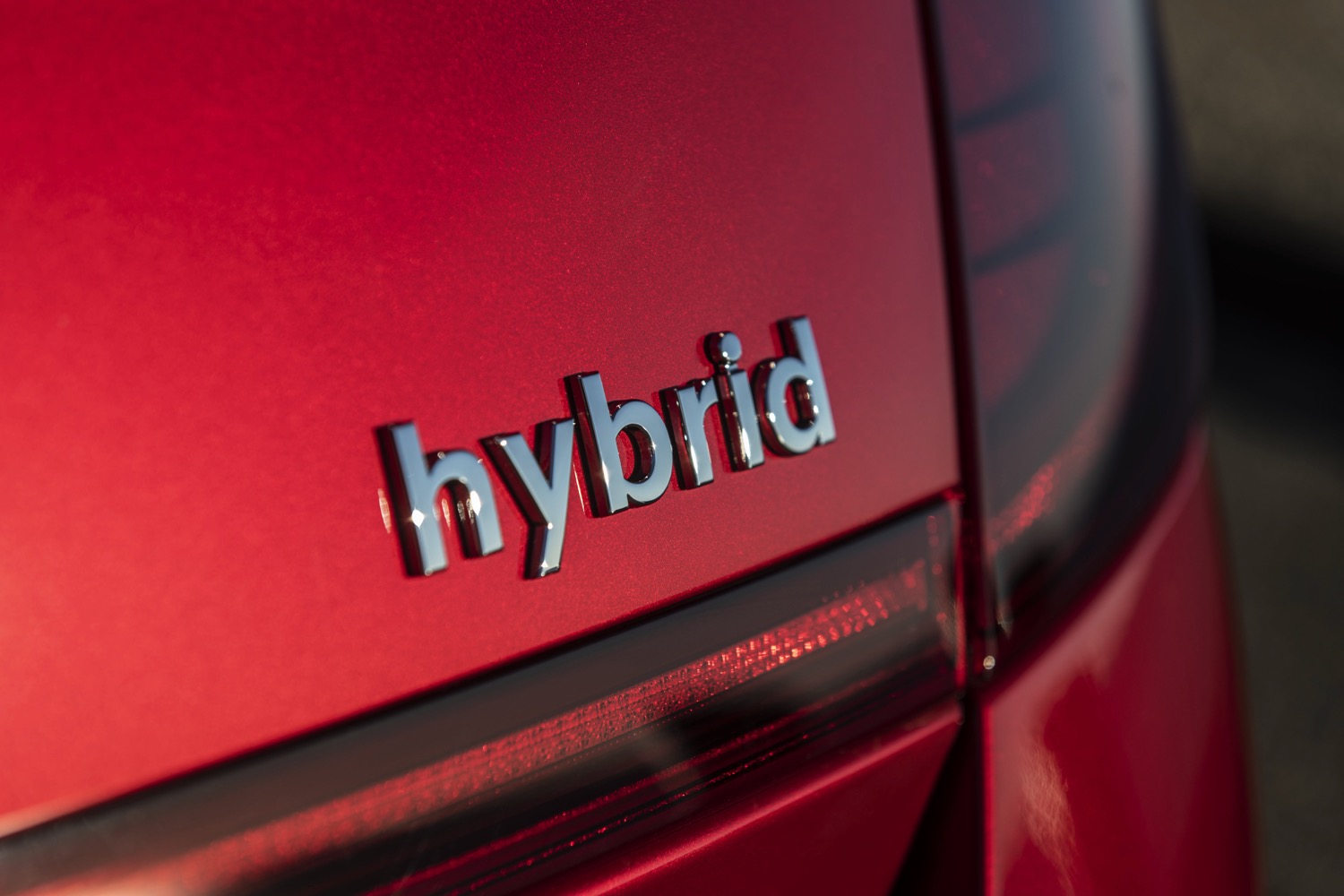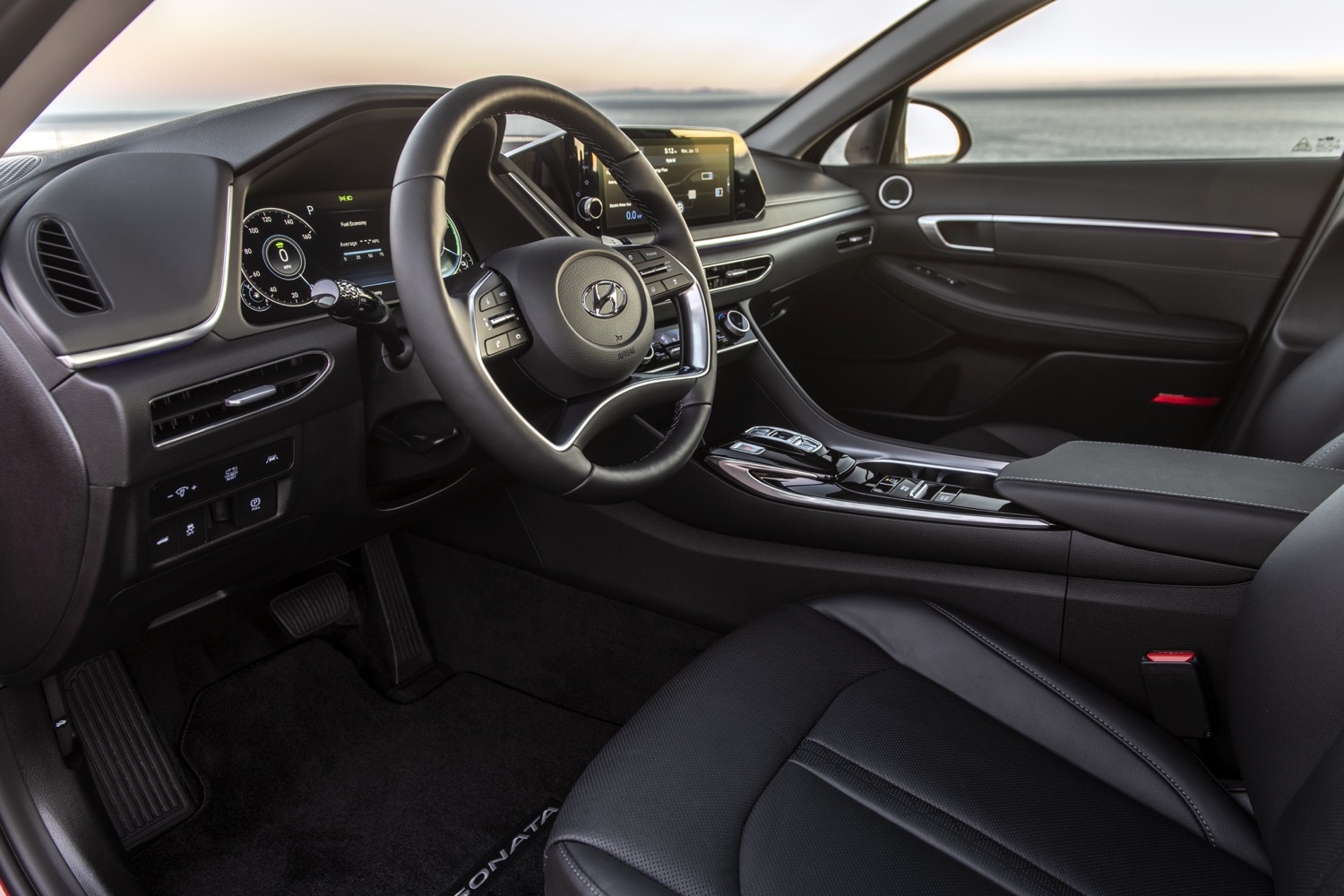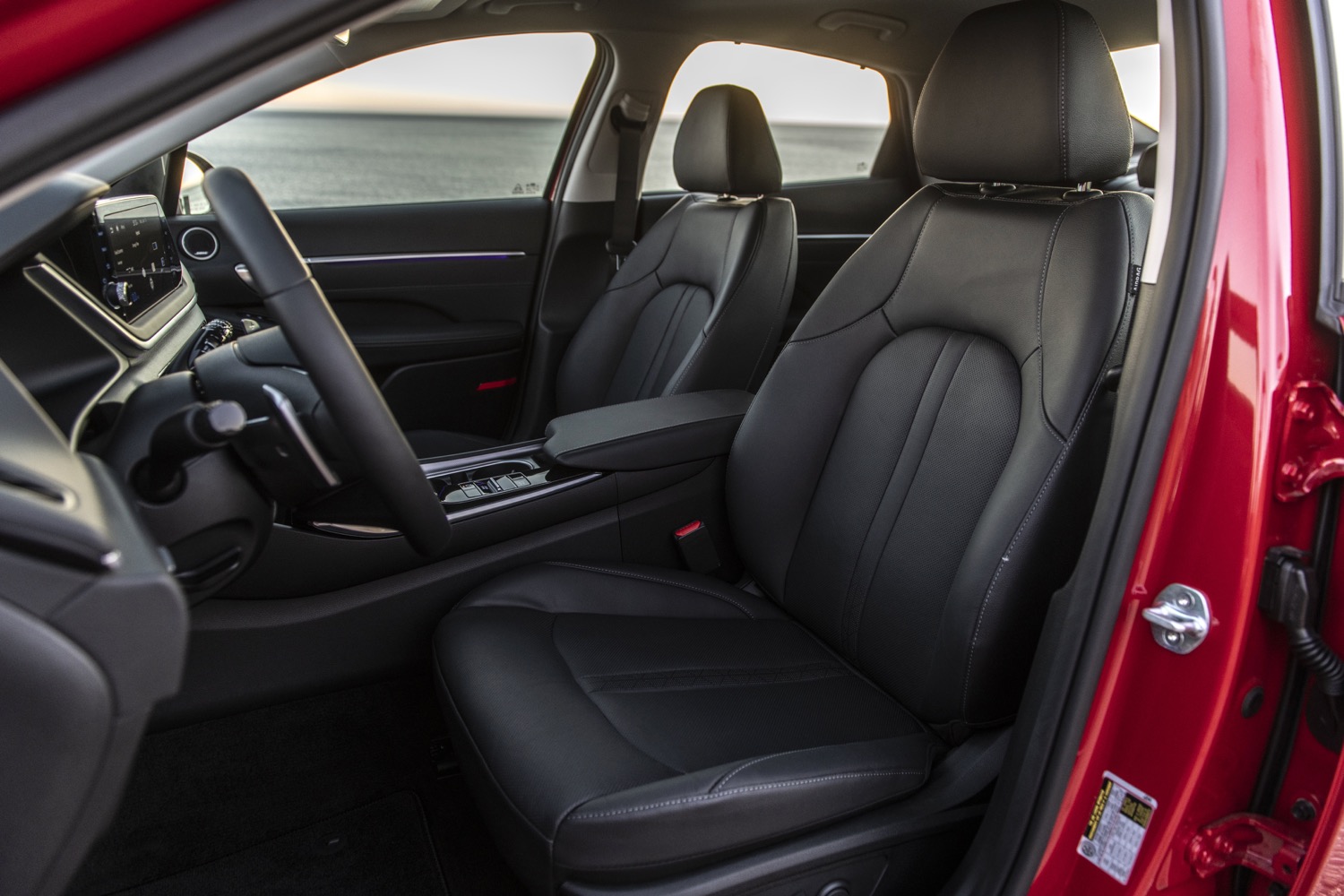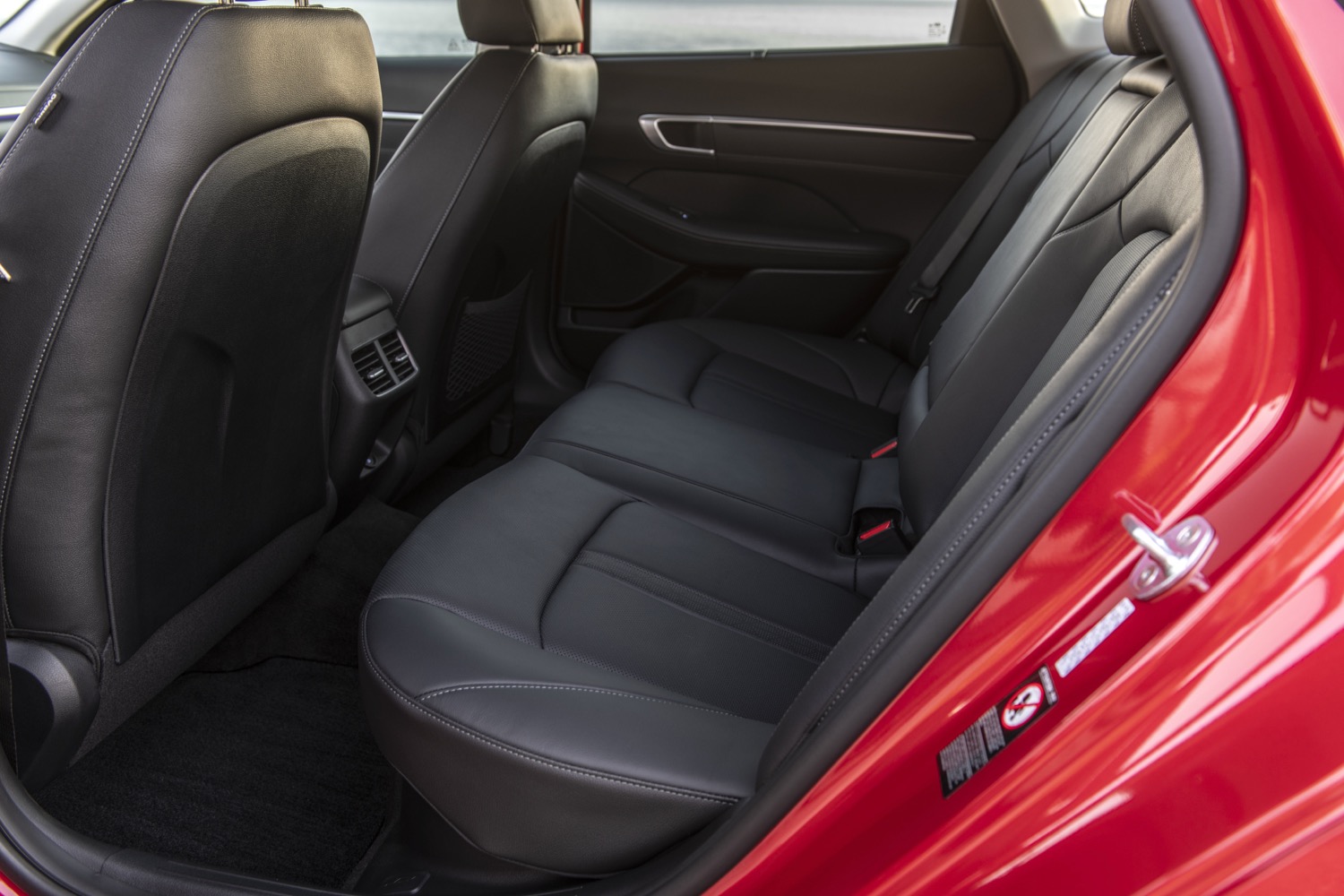The 2020 Hyundai Sonata packs some impressive tech, including an automated parking feature highlighted in a recent Super Bowl ad. Debuting at the 2020 Chicago Auto Show, the 2020 Hyundai Sonata Hybrid adds even more. When it goes on sale this spring, the midsize sedan will be available with a solar roof that Hyundai claims will increase overall driving range.
Mounting solar cells on the roof of a car isn’t the most efficient way to harvest energy, but Hyundai estimates the Sonata Hybrid’s solar roof will generate enough electricity for 700 miles of “free” driving per year. The solar cells charge both the hybrid powertrain’s battery pack and the 12-volt battery that powers the starter motor and accessories. That means it can help prevent the climate control and infotainment system from draining the battery when the car is off, according to Hyundai.
Hyundai isn’t the first automaker to offer a solar roof. You can get one on the Karma Revero luxury plug-in hybrid, and a solar roof will be an option on the Fisker Ocean electric car when it starts production in 2021. A Dutch startup called Lightyear is developing a car powered primarily by solar cells (with a backup battery pack). But solar panels are heavy, expensive, and not very efficient at converting sunlight into electricity, so it’s unclear how far this trend will go.
Solar roof or not, the 2020 Sonata Hybrid should be pretty thrifty. Hyundai expects maximum fuel economy of 52 mpg combined (50 mpg city, 54 mpg highway). That’s about the same as a base Toyota Prius, but only applies to the efficiency-focused Blue trim level. The other two Sonata Hybrid trims — SEL and Limited — will get 47 mpg combined (45 mpg city, 51 mpg highway), according to Hyundai.
The Sonata Hybrid is powered by a 2.0-liter four-cylinder engine and a single electric motor, which work together to send 192 horsepower to the front wheels. Unlike hybrids from rival manufacturers Honda and Toyota, the Sonata has a geared transmission. The six-speed automatic provides a more fun driving experience than gear-less alternatives, according to Hyundai. Active Shift Control software monitors shifts every 500 seconds to keep the transmission, gasoline engine, and electric motor on the same page in order to maximize gas mileage, Hyundai said.
The Sonata Hybrid has the same extroverted look as the non-hybrid Sonata, complete with LED elements that extend from the headlight clusters onto the hood. The hybrid model achieves a low drag coefficient of 0.24 thanks to a new grille, active air flaps, and more aerodynamic wheels, according to Hyundai. The hybrid also gets standard Apple CarPlay and Android Auto, as well as Hyundai’s Digital Key feature, which lets the driver use a smartphone in place of a key fob. Standard driver aids include: Adaptive cruise control, blind-spot monitoring, lane-keep assist, and rear cross-traffic alert.
The 2020 Hyundai Sonata Hybrid will go on sale sometime over the next few months. Pricing will be announced closer to launch, but expect to pay a premium over the non-hybrid Sonata, which starts at $24,330. Hyundai also has a sportier Sonata N-Line model in the pipeline, packing 201 hp.
Editors' Recommendations
- 2021 Hyundai Elantra goes hybrid, adds wireless Apple CarPlay and Android Auto
- The 2020 Hyundai Sonata turbo shows value and performance can go hand in hand
- Hyundai cracks off two new land speed records in fuel cell, hybrid cars

